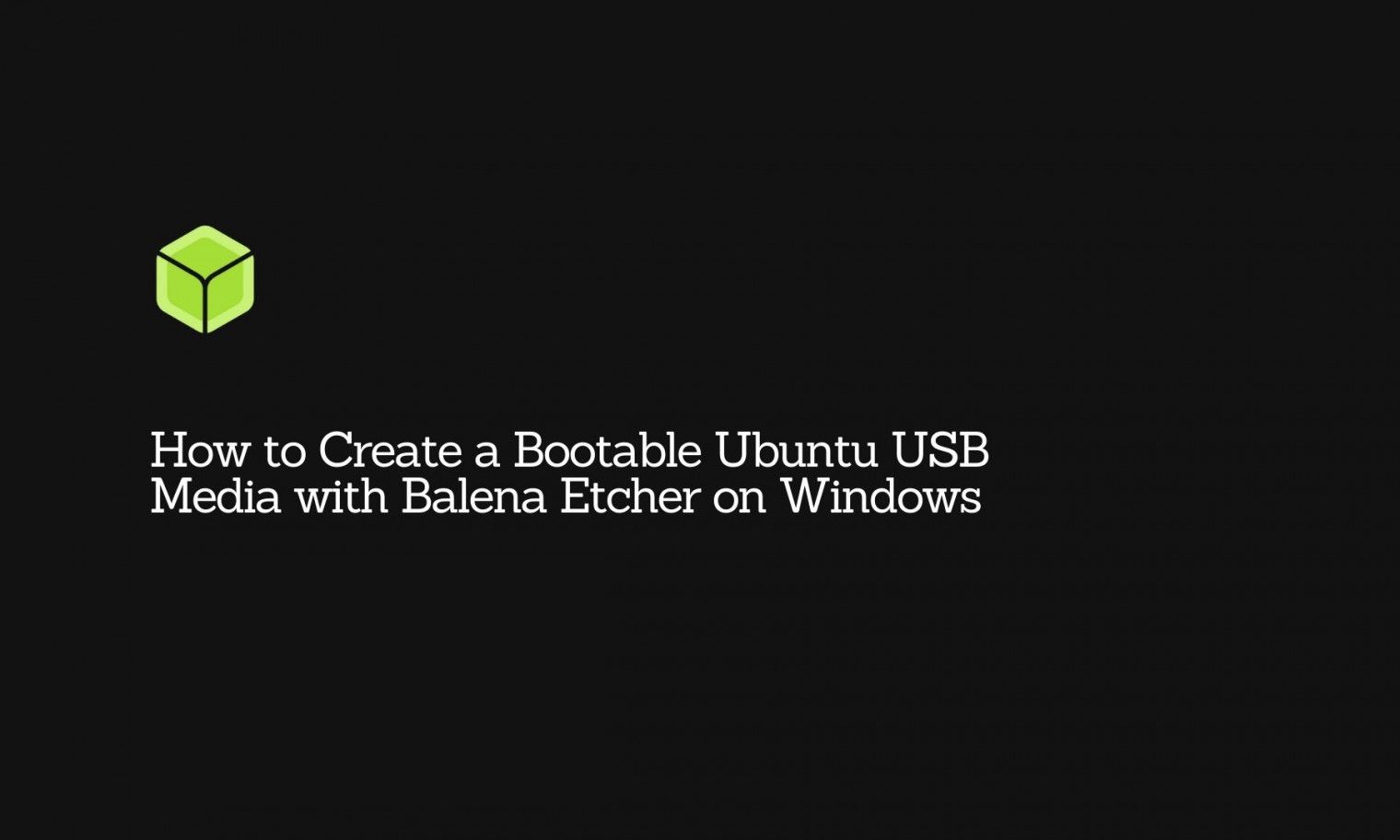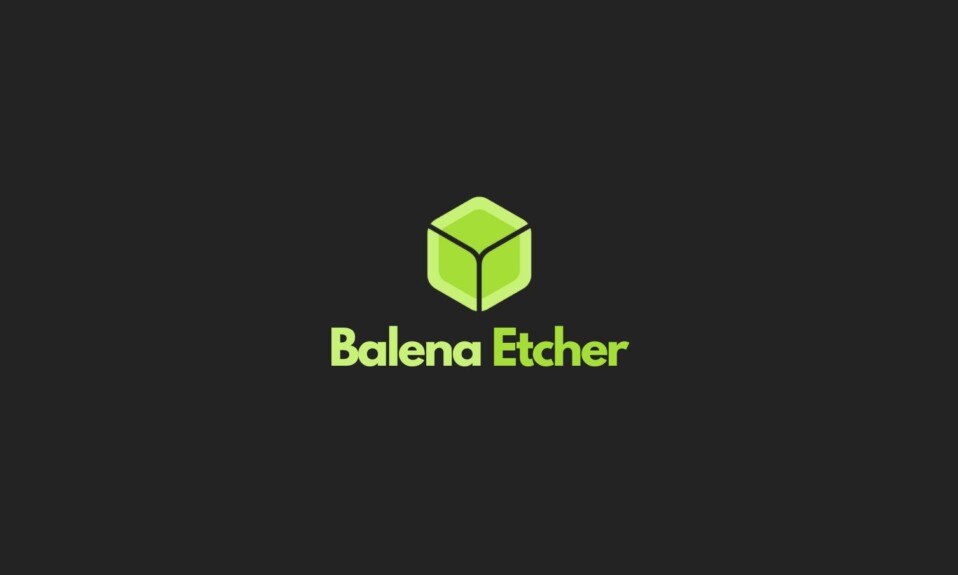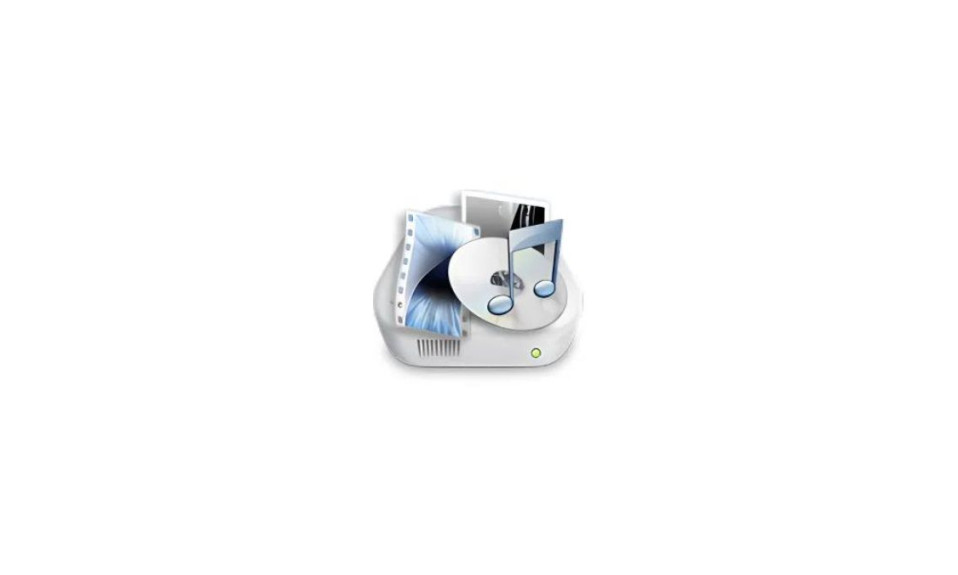
Installing Ubuntu using a bootable USB drive is probably the easiest way there is. There are different ways to create a bootable Ubuntu flash drive. For the sake of this tutorial, we will be using Balena Etcher. It’s a cross-platform utility that makes flashing ISO images a breeze.
In the following article, you will learn how to make Ubuntu bootable USB drive using Baleno Etcher and install the OS. The best thing? It’s a newbie-friendly guide, so even if you aren’t aware of the know-how of the process, you will be well-versed at the time you reach the conclusion part.

Guide to Creating a Bootable Ubuntu USB using Etcher
To make it easy to understand and implement, we have divided the whole tutorial into different sections. So, enough of the small talk. If you are ready, let’s get into the method.
Pre-requisites
To create a bootable Ubuntu flash drive, you will need:
- An 8GB USB flash drive
- Ubuntu ISO File
- Balena Etcher
Downloads
- To download the latest Ubuntu ISO image, click here.
- Download Etcher for Windows.
NOTE: When downloading Etcher, always choose the version corresponding to your current operating system. For instance, it’s Windows in our case.
Recommended System Requirements – Ubuntu 20.04 LTS
- 2 GHz dual-core processor or higher
- 4 GB system memory
- 25 GB of free hard drive space
- Internet access is helpful
Steps to Flash Ubuntu in USB using Balena Etcher
Once you have successfully downloaded the latest Ubuntu ISO and Etcher on your Windows PC, follow the steps mentioned:
Step 1: Flash ISO File
The first step to creating a bootable USB drive is to burn the ISO file into it. There are many third-party tools available for that. For this tutorial, we will be demonstrating the use of Balena Etcher for flashing Ubuntu.
Assuming you have already installed Etcher, double-click on its icon to start the app.
- Click on the “Flash from file” option and select the Ubuntu ISO image you have downloaded.
- Next, select the USB drive and click on Continue. (Plug it into your PC if you haven’t yet)
- Hit the “Flash” button.
The flashing process may take a couple of minutes – less or more, depending on your USB drive and system configuration. Upon completion, you will see Flash Complete on the screen.
Step 2: Boot from USB Flash Drive
As you have successfully created a bootable USB drive, it’s time to install Ubuntu.
- Insert the USB stick into your laptop, and restart or boot the device.
- During startup, press the F12 key and select the USB device from the system-specific boot menu.
In most cases, F12 will bring the system’s boot menu. However, depending on your manufacturer, you might have a different boot key. So alternatively, you can try Escape, F2, F8, and F10. If none of these keys work for you, pay attention to the prompt during system startup. Typically, there you should find the specified boot key for your system.
- You will see two options on the screen: Ubuntu 20.04 and Ubuntu USB. Each of these corresponds to UEFI and Legacy BIOS.
We recommend choosing UEFI unless you have a very old computer that doesn’t support it.
Step 3: Initial Setup
Upon proceeding to the installation wizard, follow the given steps:
- You will have two options on your screen: Try Ubuntu and Install Ubuntu. Click on the latter.
- Choose your keyboard layout as your preferred language and click on Continue.
- On the following page, you will be asked to choose between ‘Normal installation’ and ‘Minimal installation.’
Normally, we recommend choosing Normal installation. But if your hard drive has limited storage available, or you simply don’t want the pre-installed utilities that come with Ubuntu, feel free to go with Minimal installation.
- For ‘Other options,’ check both boxes and click on Continue.
The installation process from here onwards is mostly self-explanatory. Simply follow the on-screen instructions, and as you do so, you will be able to successfully install Ubuntu on your computer within a couple of minutes.
FAQs
Q. Does BalenaEtcher work on Linux?
BalenaEtcher is a cross-platform flashing utility that works on Windows, macOS, and Linux.
Q. Which is better, Etcher or Rufus, to flash Ubuntu?
Etcher and Rufus both work exceptionally well. However, some users may prefer Rufus due to the additional features it offers over its counterpart. Read our Balena Etcher vs Rufus article for more info. And you can also check our post on Balena Etcher Alternatives.
Q. Does Balena Etcher work with Windows ISO?
Yes, Etcher supports almost all ISO files, including Windows OS.
Wrapping Up
With Balena Etcher, it is simply a matter of a 3-step easy process to create a bootable Ubuntu USB media. We hope by applying the method shared in this article, you didn’t hit any snags and can install Ubuntu on your PC.
If you have any questions regarding this topic, please feel free to comment below. We will be happy to answer and resolve your issues.




